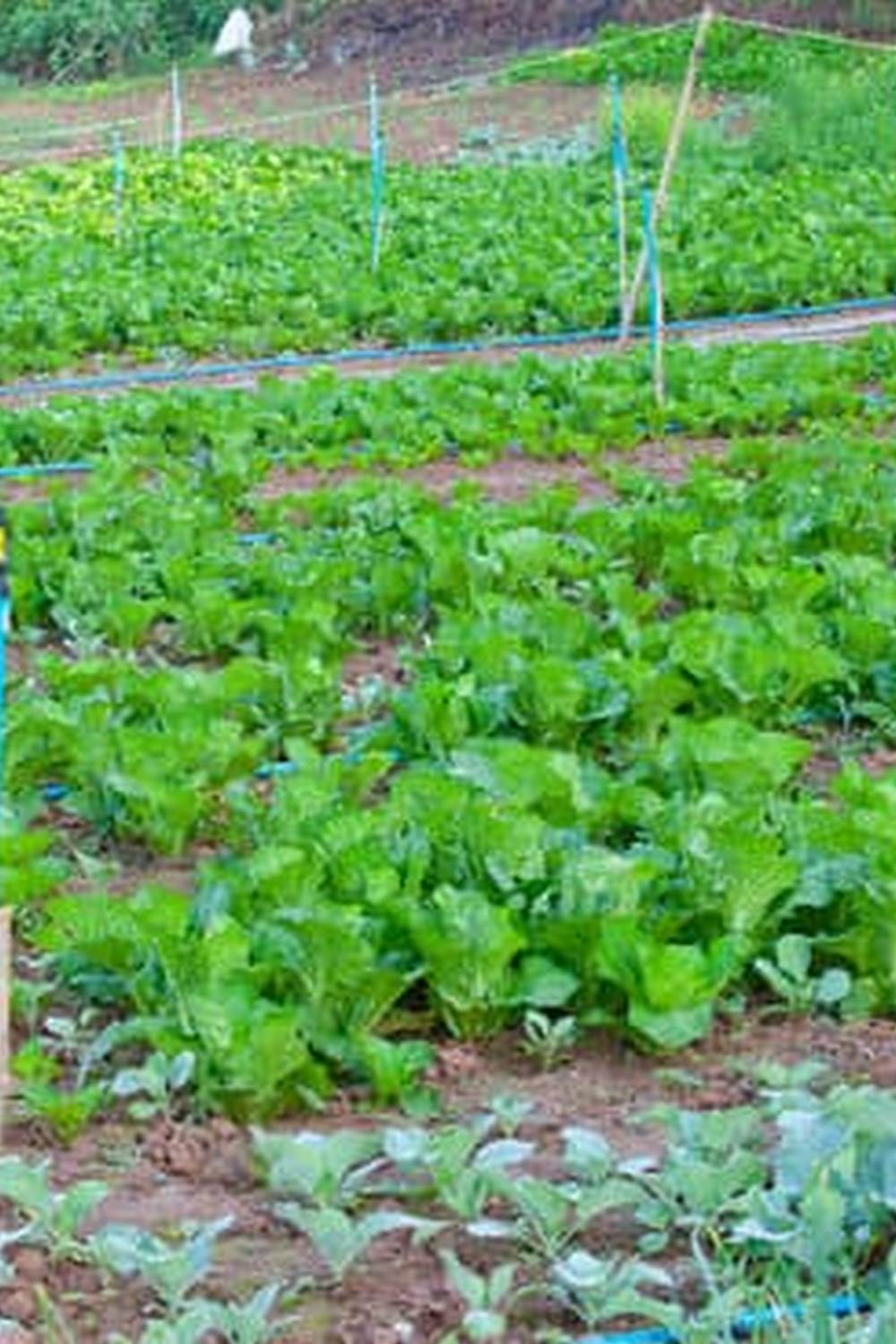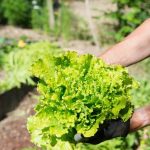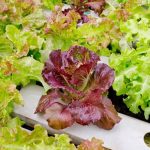Are you looking for a way to enjoy the benefits of gardening without the hassle of traditional in-ground setups? Above ground gardens provide an excellent alternative for growing vegetables, herbs, and flowers. In this article, we will explore the world of above ground gardens and discuss the best vegetables to grow in these elevated setups.
When it comes to above ground gardens, the possibilities are practically endless. Whether you have limited outdoor space or poor soil quality in your garden area, raised beds and container gardens offer a viable solution for cultivating a variety of plants. From tomatoes and peppers to lettuce and carrots, above ground gardens provide an opportunity to grow a wide range of vegetables with ease.
In the following sections, we will delve into the numerous benefits of growing vegetables in above ground gardens, including improved soil quality, reduced weed growth, and better water retention. Additionally, we will discuss how to choose the right location for your garden, select suitable vegetables for above ground setups, prepare the soil, and maintain your plants for optimal growth.
Whether you’re a seasoned gardener or just starting out, this guide is sure to help you get started on your journey to creating a thriving above ground garden filled with fresh and delicious produce.
Benefits of Growing Vegetables in Above Ground Gardens
Increased Accessibility and Convenience
One of the key benefits of growing vegetables in above ground gardens is the increased accessibility and convenience that they offer. Traditional in-ground gardens often require bending, kneeling, or crouching to tend to the plants, which can be difficult for individuals with physical limitations or mobility issues.
Above ground gardens, on the other hand, can be built at a height that is comfortable for the gardener, eliminating the need for strenuous bending and allowing for easier access to the plants. This makes it ideal for individuals who may struggle with traditional gardening methods.
Improved Soil Quality and Drainage
Above ground gardens also provide an opportunity for better control over soil quality and drainage. By using high-quality soil mixtures specifically designed for container gardening, gardeners can ensure that their vegetables have access to the nutrients they need to thrive. Additionally, elevated garden beds typically offer better drainage than traditional in-ground gardens, which can help prevent waterlogging and root rot in vegetables. This improved soil quality and drainage can lead to healthier plants and higher yields.
Protection From Pests and Weeds
Another advantage of above ground gardens is the potential for better protection from pests and weeds. Elevated garden beds are less accessible to certain pests such as slugs and snails, reducing the risk of damage to vegetable crops.
Additionally, because above ground gardens are filled with fresh soil that is free from weed seeds, there is less likelihood of dealing with invasive weeds that can compete with vegetable plants for resources. This can result in less time spent on pest control and weeding, allowing gardeners to focus more on nurturing their vegetable crops.
By taking advantage of these benefits of growing vegetables in above ground gardens, individuals can enjoy a more efficient and enjoyable gardening experience while reaping a bountiful harvest of homegrown produce.
Choosing the Right Location for Your Above Ground Garden
When it comes to choosing the right location for your above ground garden, there are a few key factors to consider. One of the most important things to keep in mind is sunlight.
Most vegetables require at least six hours of direct sunlight per day, so it’s crucial to place your above ground garden in an area that receives adequate sunlight. You’ll want to observe the patterns of sunlight in your yard throughout the day to find the best spot for your garden.
Another consideration when selecting a location for your above ground garden is water access. Vegetables need consistent watering, so you’ll want to choose a location that is convenient for watering. If you have a hose or irrigation system, make sure that it can easily reach your garden area.
In addition to sunlight and water access, you’ll also want to think about proximity to your home. Choosing a location that is easily accessible from your house will make it more convenient for you to tend to your garden on a regular basis.
Furthermore, consider any potential hazards such as strong winds or animal interference when choosing the right spot for your above ground garden vegetables. By taking all of these factors into account, you can ensure that your above ground garden will thrive and produce a bountiful harvest.
Selecting the Best Vegetables for Above Ground Gardens
When it comes to choosing the right vegetables for your above ground garden, there are a few factors to consider. First and foremost, you’ll want to select vegetables that thrive in containers or raised beds. These include tomatoes, peppers, eggplant, lettuce, spinach, kale, radishes, carrots, and herbs such as basil and parsley. These vegetables have shallow root systems and can adapt well to the limited space provided by above ground gardens.
In addition to choosing vegetables that are well-suited for above ground gardens, it’s also important to consider your own preferences and cooking habits. If you enjoy eating salads, then leafy greens like lettuce and spinach would be great choices. Similarly, if you love cooking Italian dishes, then having a variety of tomatoes and herbs like basil would be ideal.
Lastly, it’s crucial to think about the climate in which you live. Some vegetables thrive in warm weather while others prefer cooler temperatures. For example, peppers and tomatoes love heat while spinach and kale can tolerate cooler conditions. By selecting vegetables that are well-suited for your climate, you’ll set yourself up for success in your above ground garden.
| Vegetable | Suitable Climate |
|---|---|
| Tomatoes | Warm weather |
| Peppers | Warm weather |
| Eggplant | Warm weather |
| Lettuce | Cooler temperatures |
Preparing the Soil for Your Above Ground Garden
When it comes to preparing the soil for your above ground garden, it’s important to ensure that you create an optimal environment for your vegetables to thrive. Here are some essential steps to consider when preparing the soil for your above ground vegetable garden:
1. Clear the Area: Before starting, make sure to clear the area where you plan to set up your above ground garden. Remove any debris, rocks, and weeds that may hinder the growth of your vegetables.
2. Add Organic Matter: Enhance the fertility of the soil by adding organic matter such as compost or aged manure. This will provide essential nutrients for your vegetable plants and improve soil structure.
3. Test the Soil: Consider conducting a soil test to determine its pH level and nutrient content. This will help you identify any deficiencies and allow you to amend the soil accordingly.
4. Amend the Soil: Based on the results of your soil test, amend the soil with necessary nutrients or amendments such as lime, sulfur, or organic fertilizers to create an ideal growing environment for your vegetables.
5. Loosen the Soil: Use a shovel or garden fork to loosen the soil in your above ground garden area. This will improve aeration and drainage, which are crucial for healthy root development in your vegetable plants.
By following these steps, you can ensure that your above ground gardens vegetables have a strong foundation for growth and productivity throughout the growing season. Taking the time to properly prepare the soil will ultimately lead to a bountiful harvest of fresh and healthy vegetables for you to enjoy.
Planting and Maintaining Your Vegetables in Above Ground Gardens
Once you have chosen the vegetables you want to grow in your above ground garden, it’s time to start planting and maintaining them. When planting, make sure to space your plants properly to allow for adequate growth and airflow. For example, tomatoes should be planted 18-24 inches apart, while leafy greens like lettuce can be spaced closer together.
Regular watering is essential for above ground gardens, as the soil tends to dry out faster than traditional in-ground gardens. Consider using a drip irrigation system or soaker hoses to ensure even water distribution. Additionally, applying mulch around your plants can help retain moisture and prevent weeds from taking over.
In terms of maintenance, regular pruning and removing dead or diseased foliage is crucial for the health of your vegetable plants. This helps improve airflow and reduces the risk of pests and diseases. Keep an eye out for any signs of trouble, such as yellowing leaves or unusual spots, and address them promptly to keep your above ground garden thriving.
Finally, consider adding support structures for vining plants like cucumbers or peas. Trellises or cages can help keep these plants off the ground, prevent overcrowding, and make harvesting easier. By following these planting and maintenance tips, you can ensure that your above ground garden produces a bountiful harvest of fresh, delicious vegetables.
| Planting Tips | Maintenance Tips |
|---|---|
| Proper spacing for different vegetables | Regular pruning and removal of dead/diseased foliage |
| Use drip irrigation or soaker hoses | Watch for signs of trouble (yellowing leaves, spots) |
| Apply mulch to retain moisture | Add support structures for vining plants |
Tips for Maximizing Yield in Above Ground Gardens
When it comes to maximizing the yield of your above ground vegetable garden, there are several tips and strategies that can help you make the most out of your gardening efforts. Here are some valuable tips for getting a bountiful harvest from your above ground vegetable garden:
1. Proper Spacing: One important factor in maximizing yield is ensuring that you space your plants properly. This will allow each plant to have adequate room to grow and access to sunlight, nutrients, and water. Be sure to follow the spacing recommendations for each type of vegetable you are growing.
2. Regular Watering: It’s crucial to keep your above ground garden well-watered, especially during hot summer months. Vegetables typically need at least 1 inch of water per week, so be sure to monitor soil moisture levels and provide additional watering as needed.
3. Fertilization: Providing your vegetables with the necessary nutrients is essential for maximizing yield. Consider using organic fertilizers or compost to enrich the soil and provide essential nutrients for healthy plant growth.
4. Mulching: Mulching can help conserve moisture, suppress weed growth, and regulate soil temperature in your above ground garden. Consider using organic mulch such as straw, leaves, or grass clippings to improve the overall health of your garden.
5. Pruning and Trellising: Some vegetables benefit from pruning or trellising to maximize their yield. For example, tomatoes and cucumbers can be trained to grow vertically on trellises, saving space and allowing for better air circulation and light exposure.
By following these tips for maximizing yield in your above ground vegetable garden, you can ensure a successful and productive growing season while enjoying an abundance of fresh, homegrown produce.
Common Pests and Diseases in Above Ground Gardens and How to Manage Them
Pests and diseases can pose a challenge to the success of your above ground gardens vegetables. Being proactive in managing these issues is essential for maintaining a healthy and thriving garden. There are several common pests and diseases that can affect above ground gardens, but with the right knowledge and preparation, you can effectively manage them.
One of the most common pests in above ground gardens is aphids. These small insects feed on plant sap and can quickly multiply, causing damage to your vegetables. To manage aphids, one method is to introduce natural predators such as ladybugs or lacewings to help control their population. Additionally, spraying the affected plants with a solution of water and soap can also help to deter aphids.
Another frequent pest in above ground gardens is the tomato hornworm. These large caterpillars can decimate tomato plants if left unchecked. One way to manage tomato hornworms is by handpicking them off your plants as soon as you spot them. You can also introduce parasitic wasps, which are natural predators of tomato hornworms, to help control their numbers.
In addition to pests, diseases such as powdery mildew and blight can affect above ground gardens vegetables. To prevent these diseases, it’s important to avoid overwatering your plants and provide adequate air circulation. If your plants do become infected, removing and destroying affected leaves or fruits can help prevent further spread of the disease. Using fungicides specifically formulated for vegetable gardens may also be necessary in some cases to manage these diseases effectively.
Harvesting and Enjoying the Fruits of Your Above Ground Garden
In conclusion, above ground gardens offer a convenient and versatile way to grow vegetables in limited spaces. With the benefits of easy access, better soil quality, and improved pest control, above ground gardens are a popular choice for many gardeners. Choosing the right location and selecting the best vegetables are crucial steps in ensuring a successful harvest from your above ground garden.
Once you have prepared the soil and planted your vegetables, maintenance is key to maximizing yield. Regular watering, fertilizing, and monitoring for pests and diseases will contribute to a bountiful harvest. Additionally, implementing trellises or supports for certain crops can help improve yield and save space in your above ground garden.
Finally, after all the hard work of planting and maintaining your above ground garden, it’s time to enjoy the fruits of your labor. Harvesting fresh vegetables from your own garden is a rewarding experience that provides not only healthy produce but also a sense of pride and accomplishment. Whether it’s enjoying a salad with homegrown tomatoes or grilling some zucchini right from your garden, the satisfaction of harvesting vegetables from your above ground garden is truly unmatched.
Frequently Asked Questions
What Veggies Are Best for Above Ground Garden?
The best veggies for an above ground garden are those that have shallow root systems, such as lettuce, kale, peppers, tomatoes, and cucumbers. These plants thrive in the well-drained soil typically found in above ground garden beds.
What Vegetables Can You Plant Together in a Raised Bed?
In a raised bed, you can plant vegetables together that have similar watering and sunlight needs. For example, you can plant carrots with radishes, or tomatoes with basil. Just make sure to consider the compatibility of their root systems and growth habits.
What Vegetables Should Not Be Grown in a Raised Bed?
Some vegetables should not be grown in a raised bed due to their size or root system. For instance, large-rooted vegetables like potatoes or sweet potatoes may not have enough space to grow properly in a raised bed. Similarly, vining plants like pumpkins or squash may take over the space of other veggies in the bed.

If you’re looking to get into vegetable gardening, or are just looking for some tips on how to make your current garden better, then you’ve come to the right place! My name is Ethel and I have been gardening for years. In this blog, I’m going to share with you some of my best tips on how to create a successful vegetable garden.





